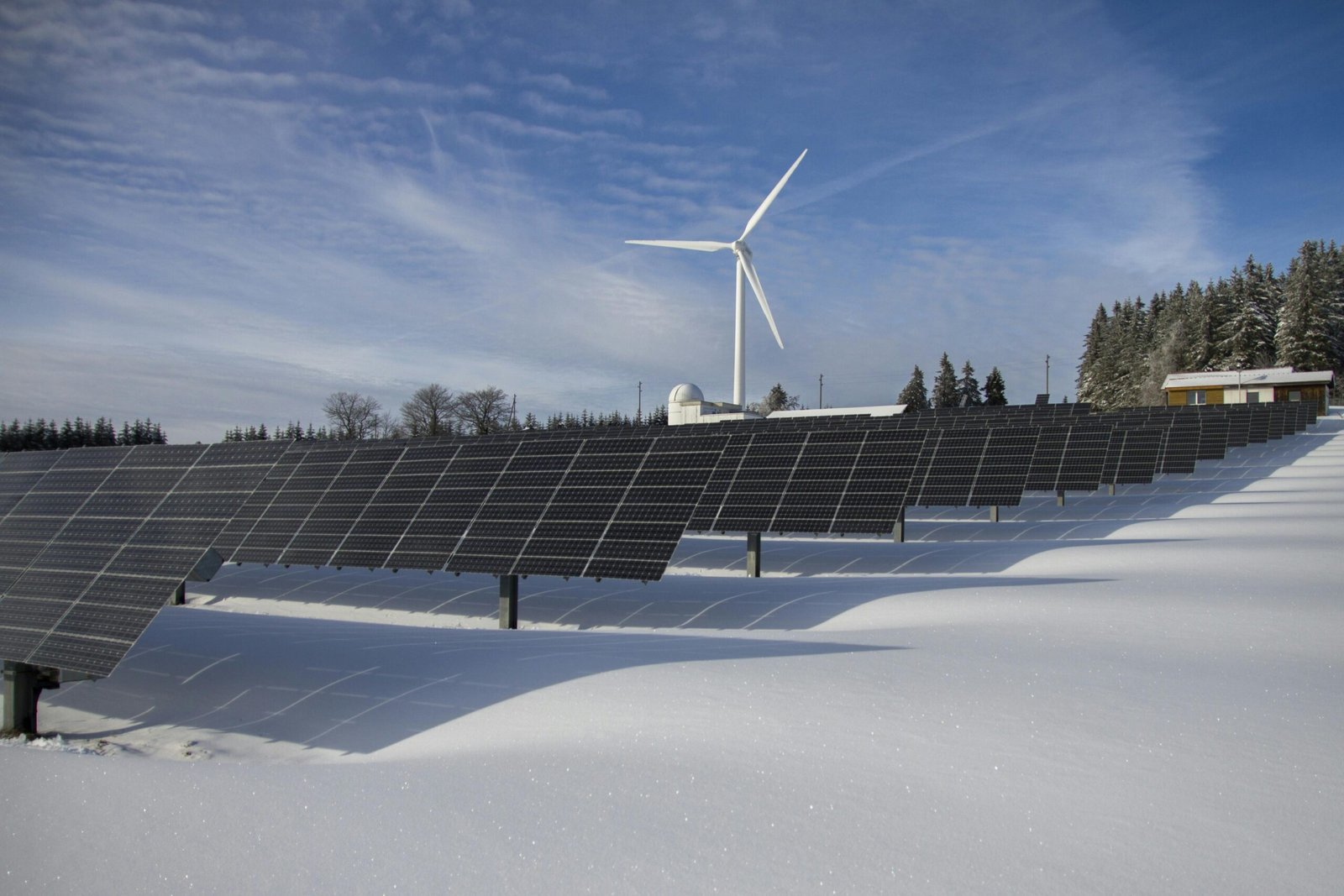In an era of growing environmental concerns and climate change, the need for renewable energy technology has never been more urgent. As we strive to reduce our dependence on fossil fuels and mitigate the impacts of global warming, renewable energy sources such as solar, wind, hydro, and geothermal power offer a sustainable solution for generating clean electricity. In this comprehensive guide, we delve into the world of renewable energy technology, exploring key advancements, benefits, and future prospects.
A Sustainable Solution for a Greener Future in Renewable Energy

1.Solar Technology
In the quest for sustainable energy solutions, solar power technology has emerged as a frontrunner, offering a clean, abundant, and renewable source of electricity. With advancements in photovoltaic (PV) technology and widespread adoption, solar energy has transformed the global energy landscape, paving the way for a cleaner and greener future.
Renewable energy, including solar power, plays a crucial role in mitigating the impacts of climate change and reducing our dependence on fossil fuels. Unlike coal, oil, and natural gas, which emit greenhouse gases and contribute to global warming, solar energy harnesses the power of the sun without producing harmful emissions. As a result, transitioning to renewable energy sources like solar power is essential for combating climate change and preserving the planet for future generations.
Solar power technology revolves around the conversion of sunlight into electricity using photovoltaic cells, commonly known as solar cells. These cells are made from semiconductor materials, such as silicon, which generate an electric current when exposed to sunlight. The electricity generated by solar cells can be used to power homes, businesses, and even entire cities, providing a clean and reliable source of energy.
One of the key advantages of solar power technology is its scalability and versatility. Solar panels can be installed on rooftops, in open fields, or even integrated into building materials, allowing for decentralized energy production and reducing reliance on centralized power plants. Additionally, solar energy can be stored using batteries or fed back into the grid, providing flexibility and resilience to the energy system.
Despite its numerous benefits, solar power technology still faces challenges, particularly in terms of intermittency and grid integration. Unlike fossil fuel power plants, which can produce electricity around the clock, solar power generation is dependent on sunlight and varies throughout the day and night. To address this challenge, energy storage solutions, such as batteries and pumped hydro storage, are being deployed to store excess solar energy for use during periods of low sunlight.
Furthermore, integrating solar power into existing energy grids requires careful planning and investment in grid infrastructure. Smart grid technology, demand response programs, and grid-scale energy storage are all essential components of a modern grid capable of accommodating high levels of renewable energy.
Looking ahead, the future of solar power technology is bright, with ongoing advancements in materials science, manufacturing processes, and energy storage technologies driving down costs and improving efficiency. With continued investment and innovation, solar energy has the potential to become the dominant source of electricity worldwide, powering a sustainable and prosperous future for all.
2. Wind power Technology
In the pursuit of a sustainable future, renewable energy has become a ray of hope, offering a clean and plentiful alternative to fossil fuels. Among the various sources of renewable energy, wind power technology stands out as a leader, utilizing the natural force of the wind to generate electricity. In this article, we explore the world of wind power technology, discussing its advancements, benefits, and role in shaping the renewable energy landscape.
Renewable energy, often praised as the foundation of a transition to green energy, holds the potential to reduce carbon emissions, combat climate change, and promote energy independence. Within this realm, wind power technology has gained recognition for its scalability, reliability, and cost-effectiveness in generating electricity. By harnessing the kinetic energy of moving air masses, wind turbines convert wind power into mechanical energy, which is then converted into electricity through generators.
Wind power technology has seen significant progress in recent years, driven by innovations in turbine design, manufacturing processes, and site selection strategies. Modern wind turbines feature larger rotor diameters, taller towers, and advanced aerodynamic profiles, allowing them to capture more wind energy and operate efficiently across a wide range of wind speeds. Additionally, advancements in materials science and control systems have improved turbine performance, reliability, and lifespan.
One of the major advantages of wind power technology is its ability to complement other renewable energy sources, such as solar and hydroelectric power. Wind turbines can be installed in various geographical locations, including coastal areas, plains, and mountainous regions, where wind resources are abundant. By harnessing the power of the wind alongside solar panels, hydropower plants, and energy storage systems, renewable energy systems can achieve greater resilience, stability, and flexibility in meeting our energy needs.
Renewables Energy | PPower generation 2024 |
|---|---|
Wind power | 46.16 GW |
Solar Power | 82.63 GW |
Biomass/Co-generation | 10.35 GW |
Small Hydro Power | 5 GW |
Waste To Energy | 0.59 GW |







Nice artical
Good work